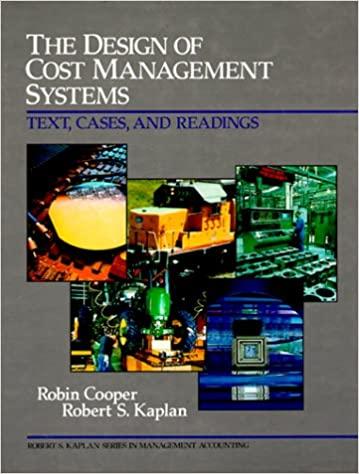Question
The comparative balance sheet of Whitman Co. at December 31, 20Y2 and 20Y1, is as follows: Dec. 31, 20Y2 Dec. 31, 20Y1 Assets Cash $
The comparative balance sheet of Whitman Co. at December 31, 20Y2 and 20Y1, is as follows:
| Dec. 31, 20Y2 | Dec. 31, 20Y1 | ||||
| Assets | |||||
| Cash | $ 840,170 | $ 904,150 | |||
| Accounts receivable (net) | 764,550 | 697,340 | |||
| Inventories | 1,159,430 | 1,067,020 | |||
| Prepaid expenses | 26,890 | 31,930 | |||
| Land | 289,020 | 436,890 | |||
| Buildings | 1,335,870 | 823,370 | |||
| Accumulated depreciation-buildings | (378,080) | (352,870) | |||
| Equipment | 470,500 | 415,880 | |||
| Accumulated depreciation-equipment | (129,390) | (145,350) | |||
| Total assets | $4,378,960 | $3,878,360 | |||
| Liabilities and Stockholders' Equity | |||||
| Accounts payable (merchandise creditors) | $ 832,000 | $ 877,980 | |||
| Bonds payable | 245,220 | 0 | |||
| Common stock, $20 par | 289,000 | 107,000 | |||
| Paid-in capital: Excess of issue price over par-common stock | 693,000 | 511,000 | |||
| Retained earnings | 2,319,740 | 2,382,380 | |||
| Total liabilities and stockholders' equity | $4,378,960 | $3,878,360 | |||
The noncurrent asset, noncurrent liability, and stockholders equity accounts for 20Y2 are as follows:
Prepare a statement of cash flows, using the indirect method of presenting cash flows from operating activities. Use the minus sign to indicate cash out flows, cash payments, decreases in cash, or any negative adjustments.
| Cash flows from operating activities: | ||
| DepreciationDividendsGain on sale of landLoss on sale of landNet lossRetained earnings | $- Select - | |
| Adjustments to reconcile net loss to net cashflow from operating activities: | ||
| Decrease in accounts receivableDepreciationGain on sale of landIncrease in accounts receivableIncrease in bonds payableIncrease in common stock | - Select - | |
| Decrease in accounts receivableDecrease in inventoriesGain on sale of landIncrease in accounts payableIncrease in prepaid expensesLoss on sale of land | - Select - | |
| Changes in current operating assets and liabilities: | ||
| Decrease in accounts receivableDecrease in inventoriesDepreciationIncrease in accounts receivableIncrease in accumulated depreciation-buildingsIncrease in bonds payable | - Select - | |
| Decrease in accounts receivableDecrease in bonds payableDecrease in inventoriesIncrease in accounts payableIncrease in inventoriesIncrease in land | - Select - | |
| Decrease in inventoriesDecrease in prepaid expensesIncrease in accounts payableIncrease in accumulated depreciation-equipmentIncrease in common stockIncrease in prepaid expenses | - Select - | |
| Decrease in accounts payableDecrease in inventoriesIncrease in accounts payableIncrease in paid-in capital in excess of par-common stockNet incomeRetained earnings | - Select - | |
| Net cash flow used for operating activities | $fill in the blank 15 | |
| Cash flows from investing activities: | ||
| Cash received from customersCash received from gain on sale of landCash received from land soldCash received from issuance of common stockCash received from net incomeCash received from retained earnings | $- Select - | |
| Accumulated depreciationCash paid for acquisition of buildingCash paid for bonds payableCash paid for dividendsDepreciationLoss on sale of land | - Select - | |
| Cash from issuance of bonds payableCash from issuance of common stockCash paid for purchase of equipmentDecrease in accounts receivableIncrease in accounts payableIncrease in inventories | - Select - | |
| Net cash flow used for investing activities | fill in the blank 22 | |
| Cash flows from financing activities: | ||
| Cash received from decrease in accounts receivableCash received from decrease in prepaid expensesCash received from issuance of bonds payableCash received from purchase of buildingCash received from purchase of equipmentCash received from sale of land | $- Select - | |
| Cash paid for accounts payableCash paid for acquisition of buildingCash paid for issuance of common stockCash received from customersCash received from issuance of common stockCash received from sale of land | - Select - | |
| Cash from net lossCash paid for dividendsCash paid for loss on sale of landCash paid for purchase of buildingCash paid for purchase of equipmentCash paid for retained earnings | - Select - | |
| Net cash flow from financing activities | fill in the blank 29 | |
| Cash from issuance of bonds payableCash from issuance of common stockChange in cashDecrease in accounts receivableIncrease in accounts payableIncrease in inventories | $- Select - | |
| Cash at the beginning of the year | fill in the blank 32 | |
| Cash at the end of the year | $fill in the blank 33 |
Step by Step Solution
There are 3 Steps involved in it
Step: 1

Get Instant Access to Expert-Tailored Solutions
See step-by-step solutions with expert insights and AI powered tools for academic success
Step: 2

Step: 3

Ace Your Homework with AI
Get the answers you need in no time with our AI-driven, step-by-step assistance
Get Started


